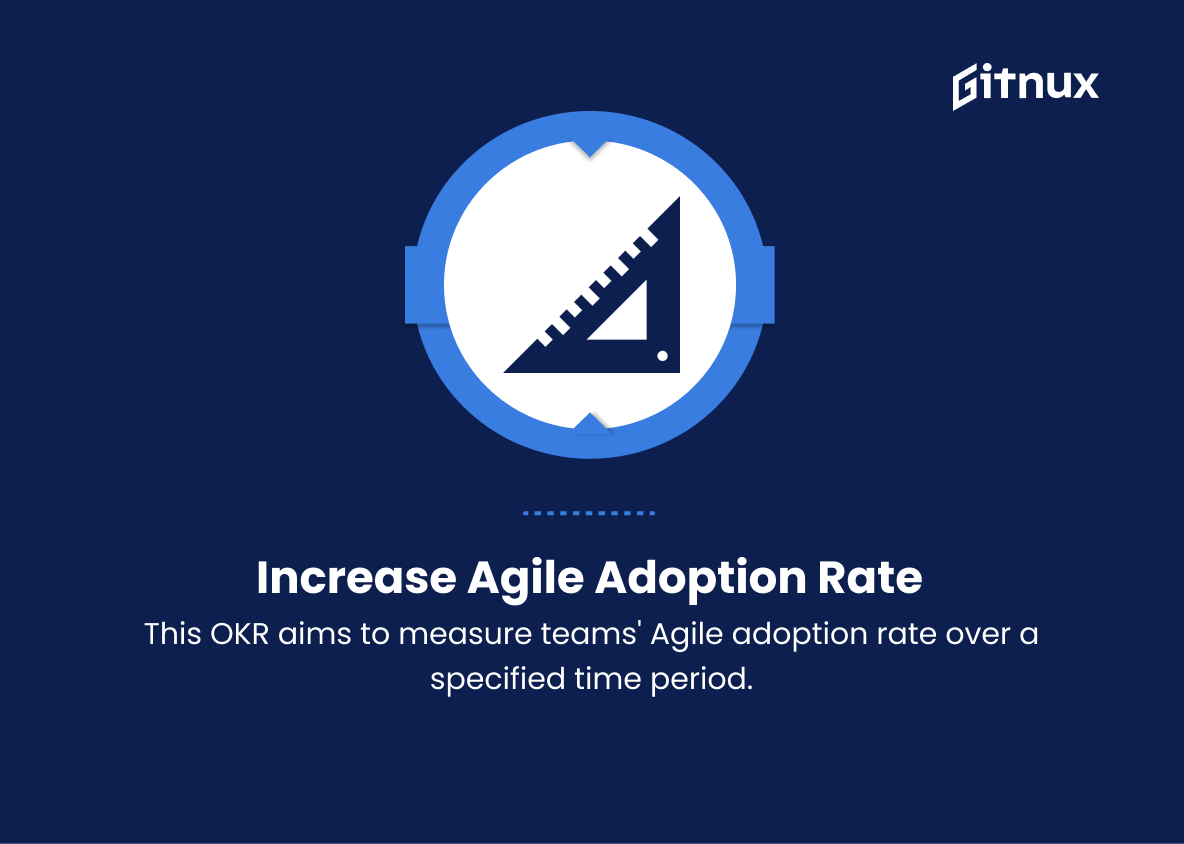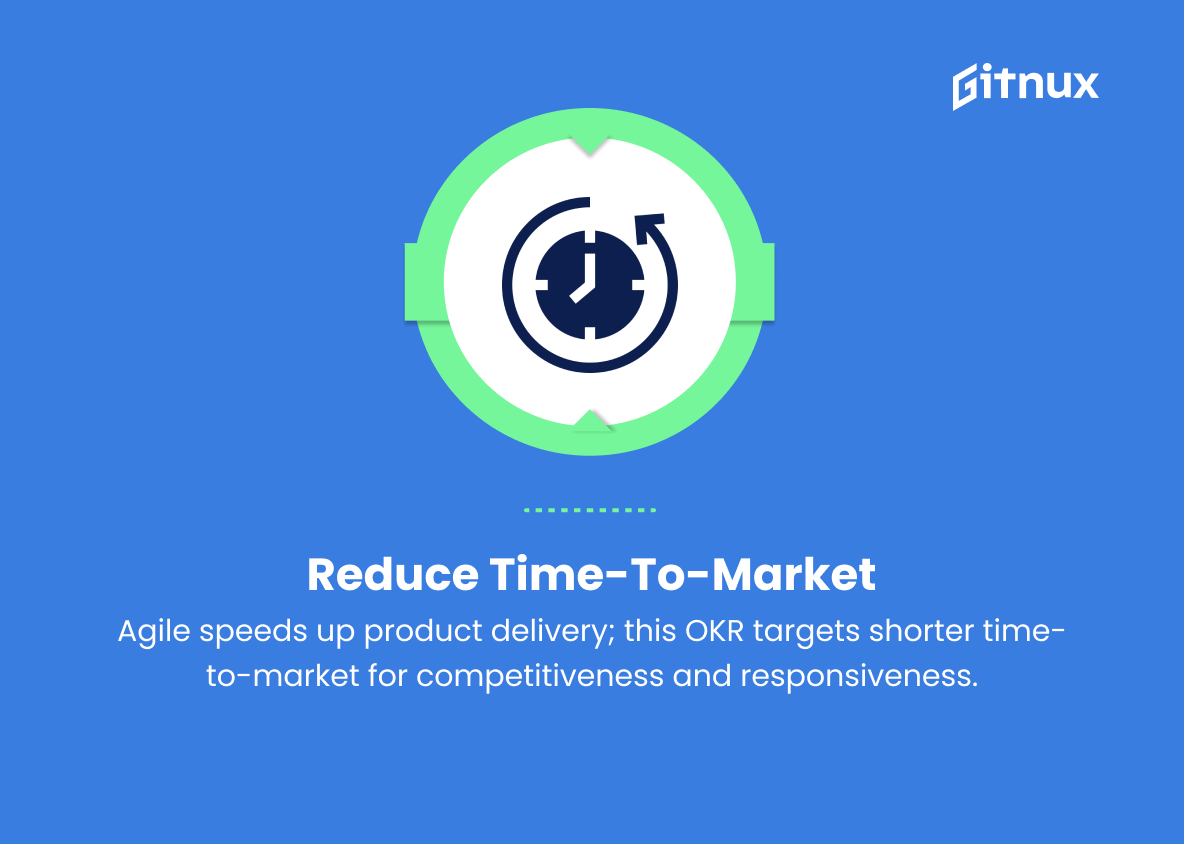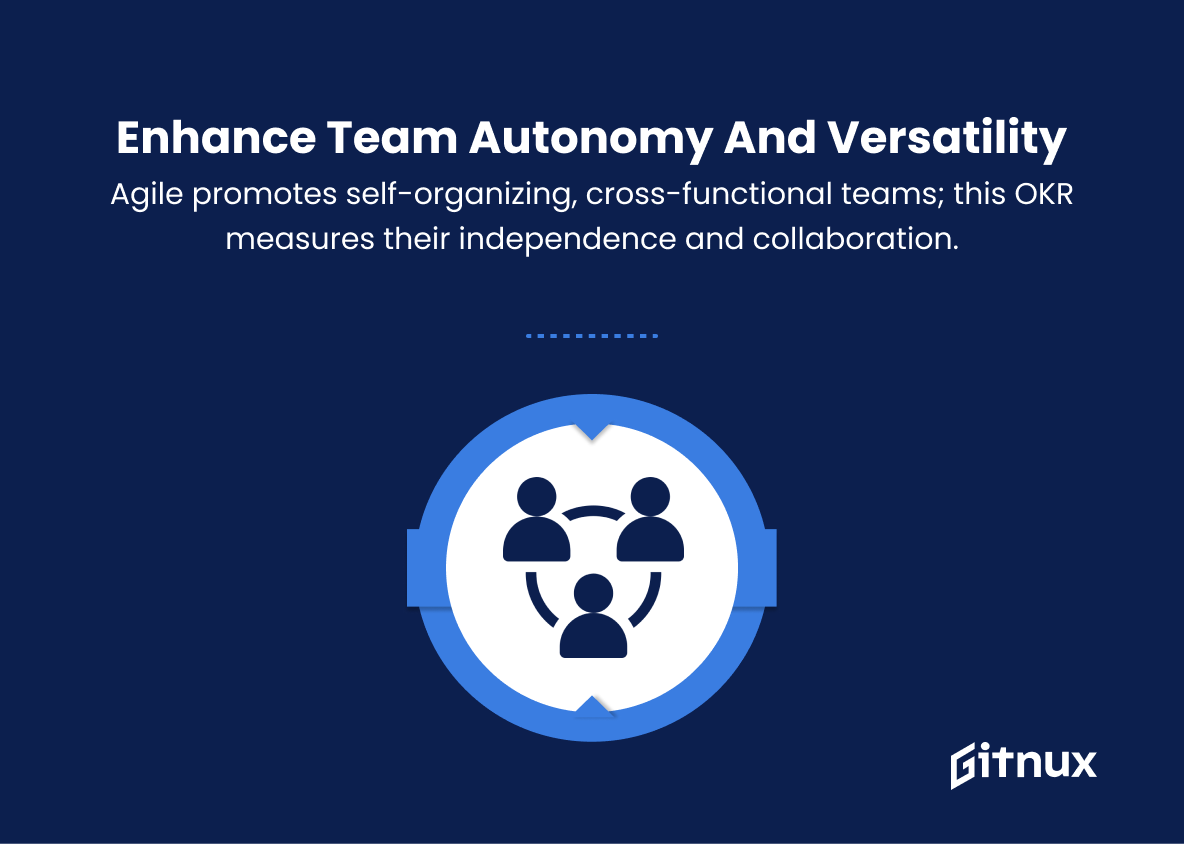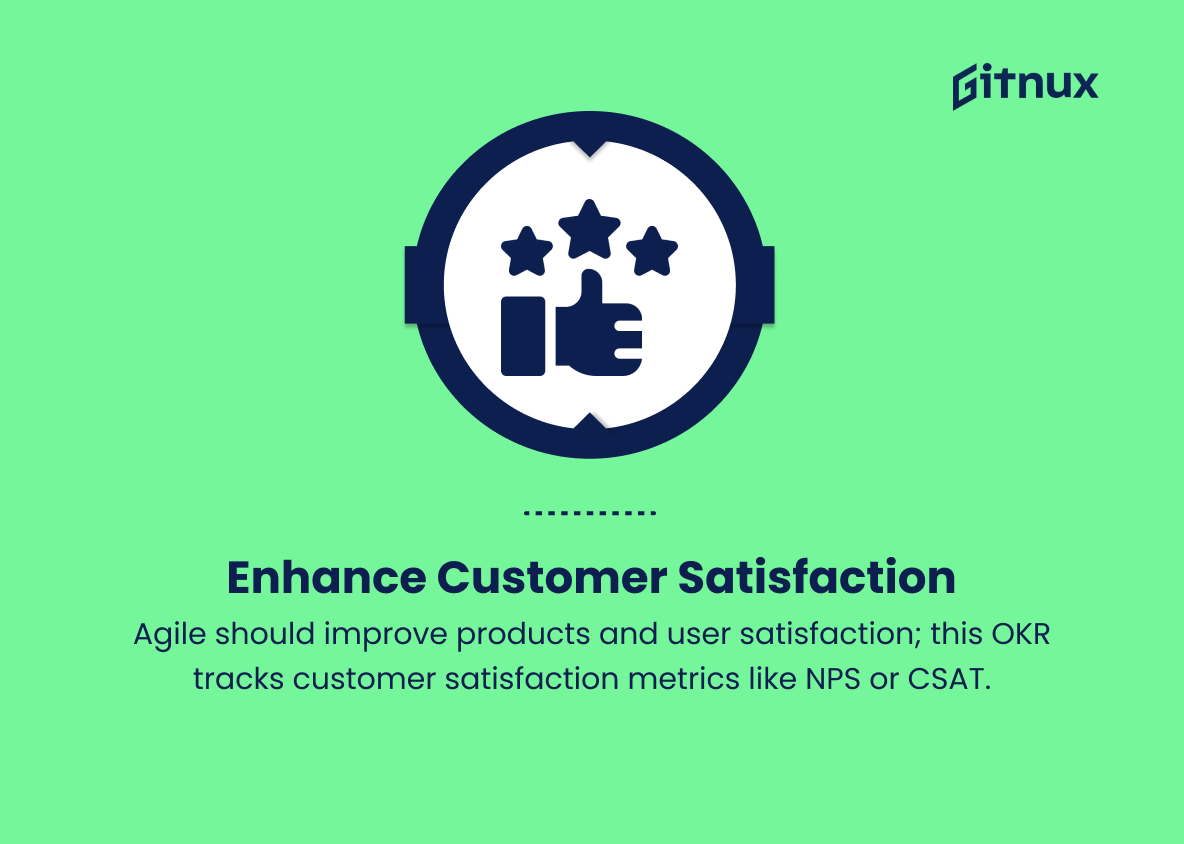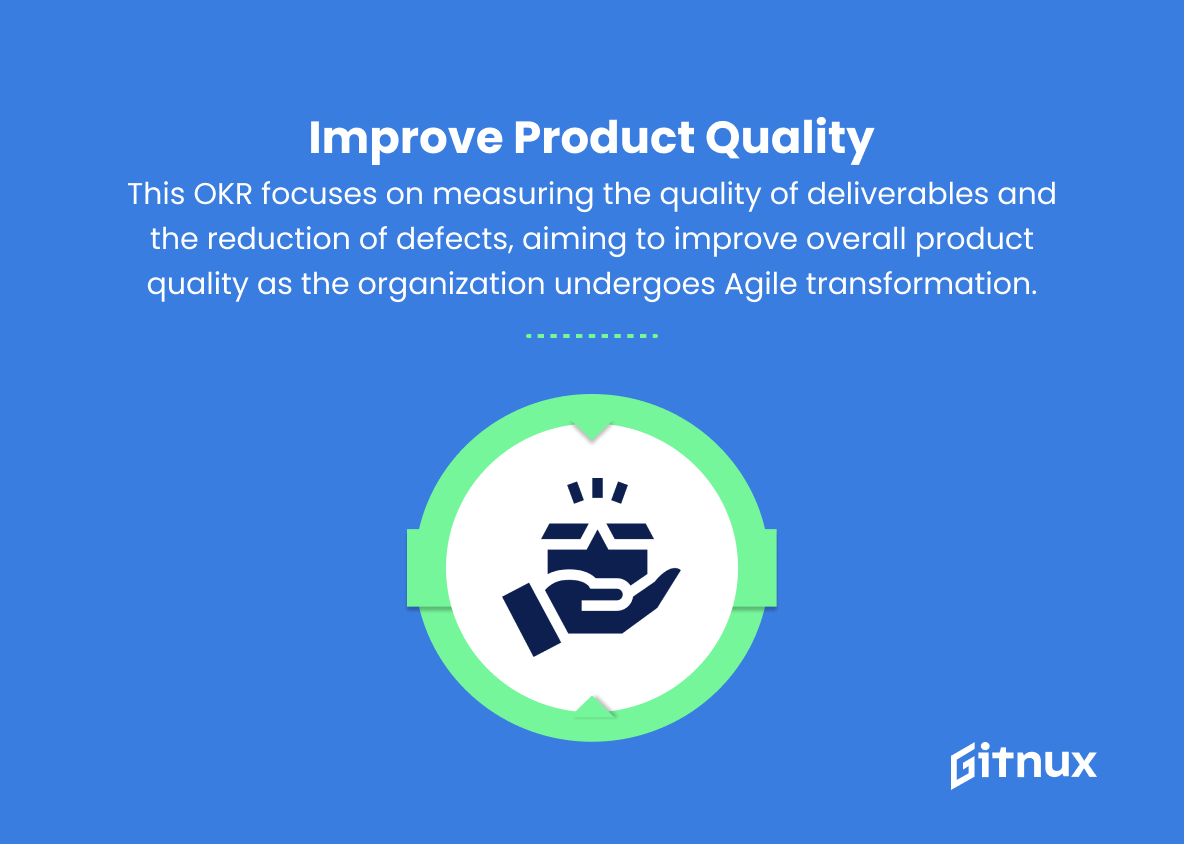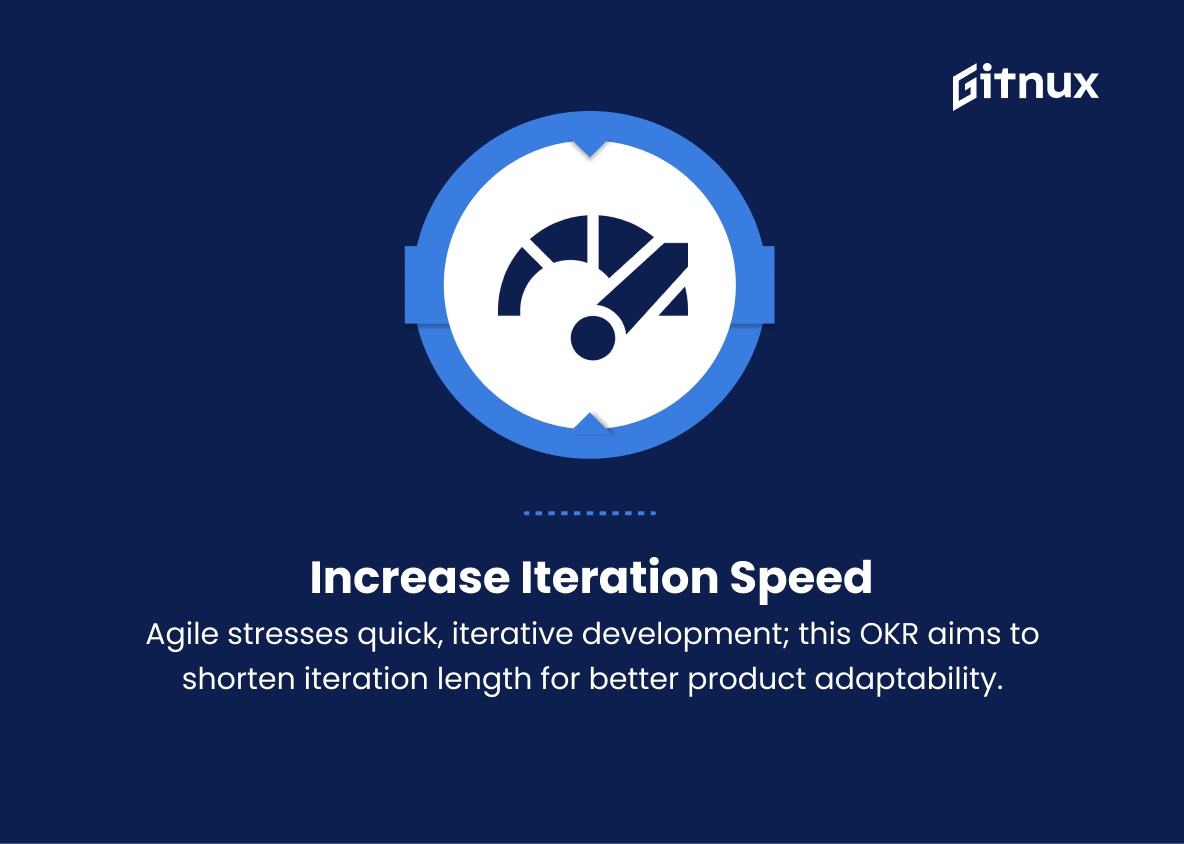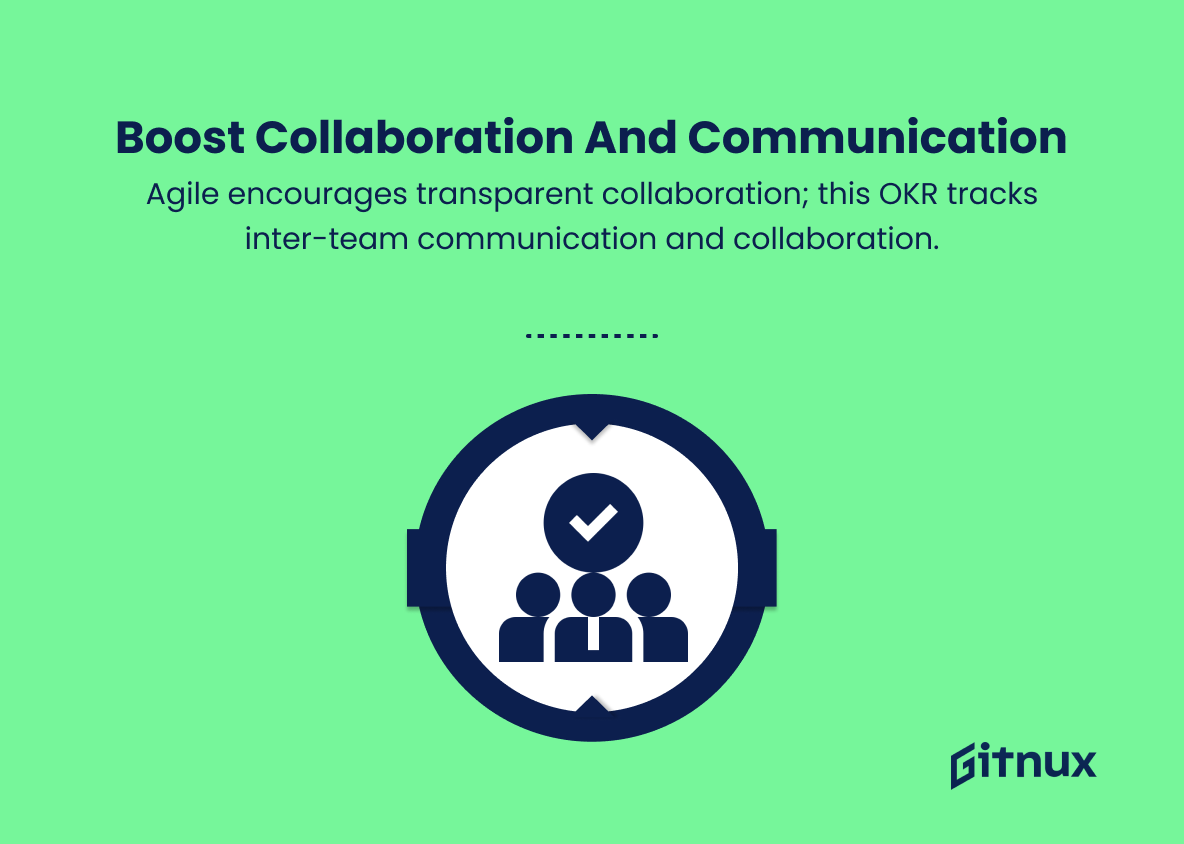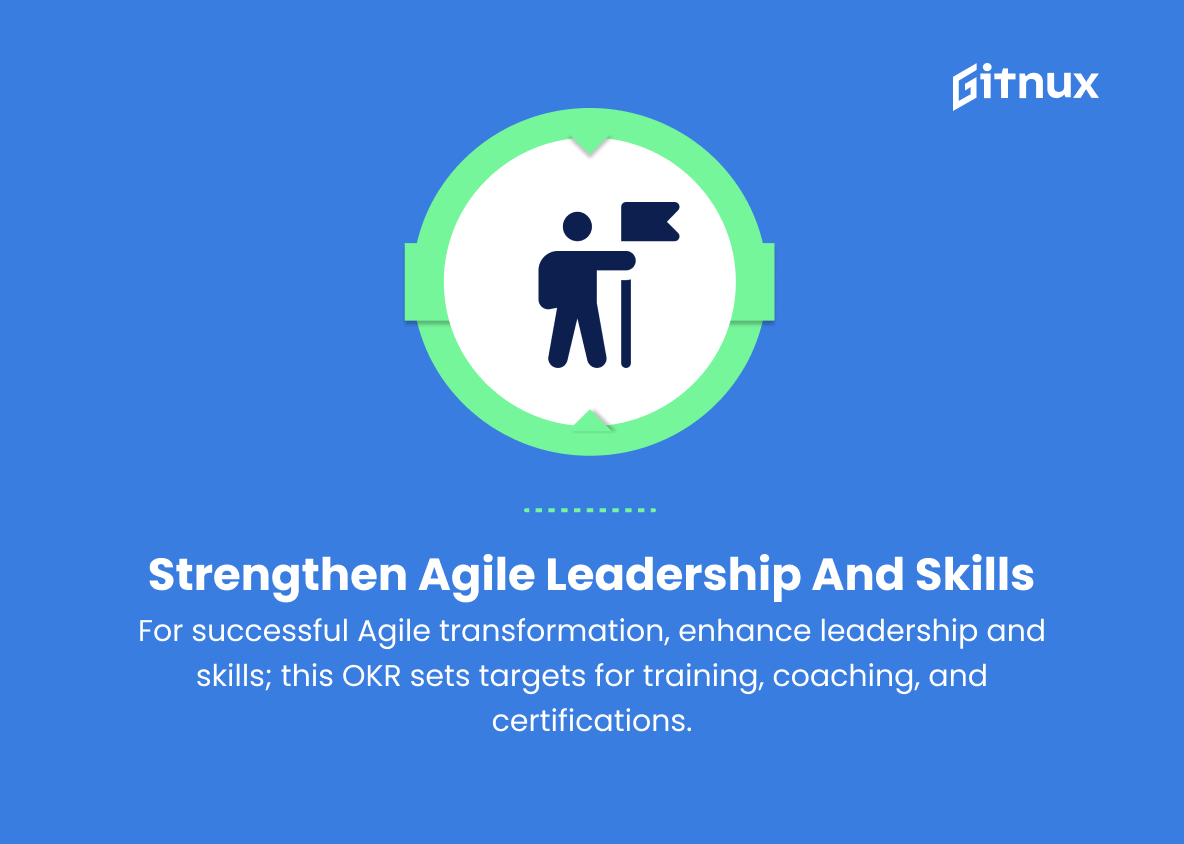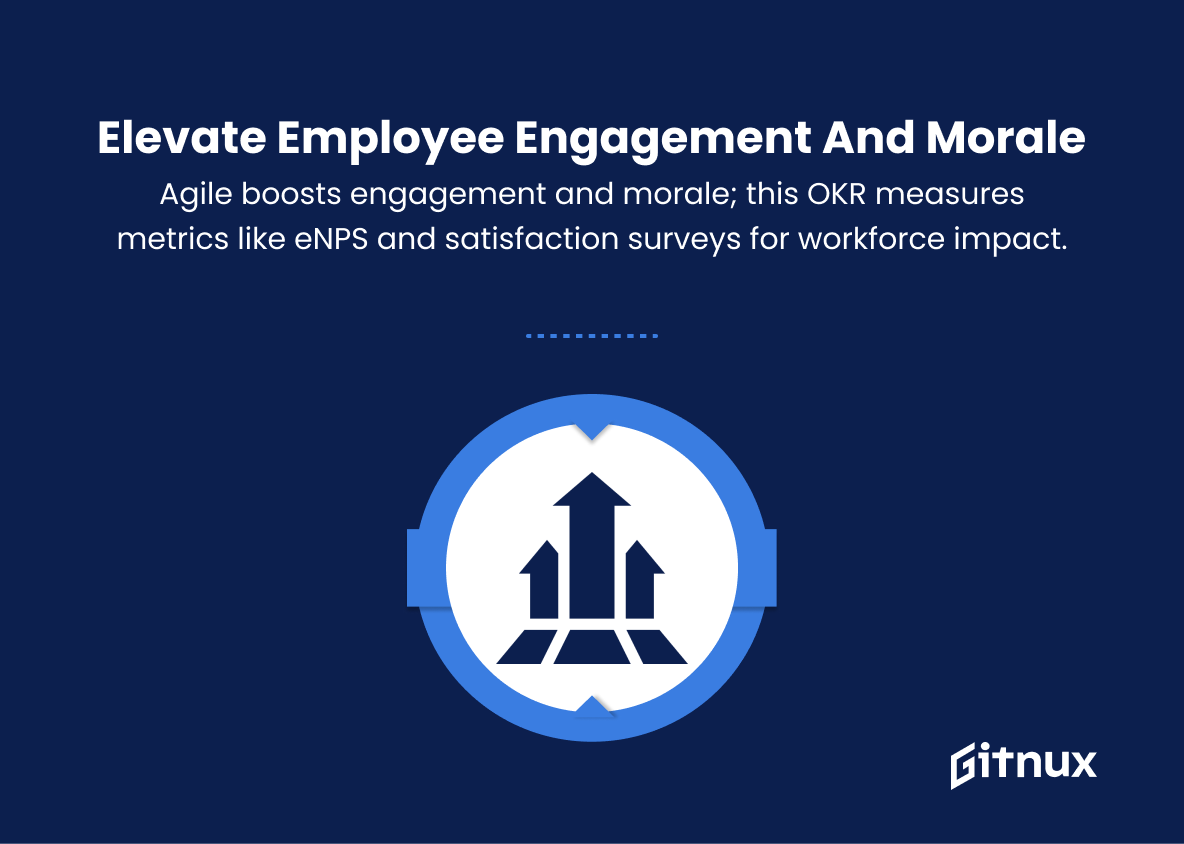In today’s rapidly changing business landscape, organizations are continually seeking innovative strategies to stay ahead of the competition and drive growth. One such approach gaining widespread attention is the adoption of Agile Transformation OKRs (Objectives and Key Results) – a powerful framework designed to align team efforts, prioritize resources, and enhance adaptability.
Through this blog post, we will take a deep dive into the critical aspects of Agile Transformation OKRs, exploring their significance, benefits, and the best practices to optimize their implementation, empowering your organization to unlock the full potential of agility and thrive in this era of constant evolution.
Agile Transformation OKRs You Should Know
1. Increase Agile adoption rate
This OKR aims to measure the percentage of teams that have successfully implemented Agile methodologies in their work processes. The key result can be a higher adoption rate after a certain time period, such as a quarter or a year.
2. Improve Agile maturity level
The maturity level indicates the extent to which Agile practices and principles are embedded in a team’s culture and operations. This OKR can measure the growth in maturity levels of different teams implementing Agile.
3. Reduce time-to-market
One major benefit of Agile is faster product delivery. This OKR focuses on decreasing the duration from product inception to market release, enabling organizations to be more competitive and responsive to customer needs.
In today’s rapidly changing business landscape, organizations are continually seeking innovative strategies to stay ahead of the competition and drive growth.4. Increase team autonomy and cross-functionality
Agile transformation encourages self-organizing, cross-functional teams. This OKR can assess the extent to which teams can operate independently and collaborate effectively with other functions within an organization.
One such approach gaining widespread attention is the adoption of Agile Transformation OKRs (Objectives and Key Results) – a powerful framework designed to align team efforts, prioritize resources, and enhance adaptability.5. Enhance customer satisfaction
Agile transformation should lead to better products and services, enhancing end-user satisfaction. This OKR measures how well the organization performs in customer satisfaction metrics, such as Net Promoter Score (NPS) or Customer Satisfaction Score (CSAT).
6. Improve product quality
This OKR focuses on measuring the quality of deliverables and the reduction of defects, aiming to improve overall product quality as the organization undergoes Agile transformation.
7. Increase iteration speed
Agile methodologies emphasize iterative development and rapid delivery. This OKR measures the average length of development iterations and strives to decrease that duration to improve product responsiveness and adaptability.
8. Improve collaboration and communication
Agile transformation incorporates open, transparent communication and collaboration among team members. This OKR monitors how effectively teams collaborate and communicate across the organization.
9. Strengthen Agile leadership and skills
To successfully implement Agile transformation, organizations need strong Agile leadership and skills at all levels. This OKR sets targets to enhance Agile training, coaching, and certifications to develop the necessary skills effectively.
10. Boost employee engagement and morale
Agile transformations often lead to an increase in engagement and morale, as employees feel more empowered and connected to their work. This OKR measures employee engagement metrics, such as the eNPS (employee Net Promoter Score) or employee satisfaction surveys, to ensure a positive effect on the workforce.
Agile Transformation OKRs Explained
The Agile Transformation OKRs play a critical role in driving organizational change, improving efficiencies, and streamlining processes. By increasing Agile adoption rates, organizations can better measure the successful implementation of Agile methodologies across teams, leading to improved maturity levels and stronger alignment with Agile principles.
A focus on reducing time-to-market enables organizations to be more competitive and responsive to customer needs while fostering an environment of team autonomy and cross-functionality. Additionally, enhancing customer satisfaction through improved product quality, bolstered by increased iteration speeds, is essential for building better products and services. Furthermore, the Agile Transformation OKRs prioritize strengthening communication, collaboration, leadership, and skills within the organization to effectively manage the dynamic changes brought on by Agile implementation.
Lastly, by boosting employee engagement and morale, organizations create an empowered workforce that feels more connected to their work and is better equipped to drive lasting success. Overall, these OKRs provide a comprehensive framework for companies to successfully navigate the Agile transformation journey while maximizing the benefits for all stakeholders.
Conclusion
In summary, Agile Transformation OKRs or Objectives and Key Results play a crucial role in driving success and aligning an organization’s strategic vision by providing clear, measurable goals that can be assessed on a regular basis. By adopting this approach, businesses can ensure a smooth transition to Agile methodologies, enhancing productivity and overall performance along the way.
As we’ve explored throughout this blog post, the implementation of Agile Transformation OKRs necessitates continuous improvement, open communication, and a strong commitment to change. By diligently applying these principles, organizations can successfully navigate the challenges of Agile Transformation and unlock newfound potential for innovation and growth.
